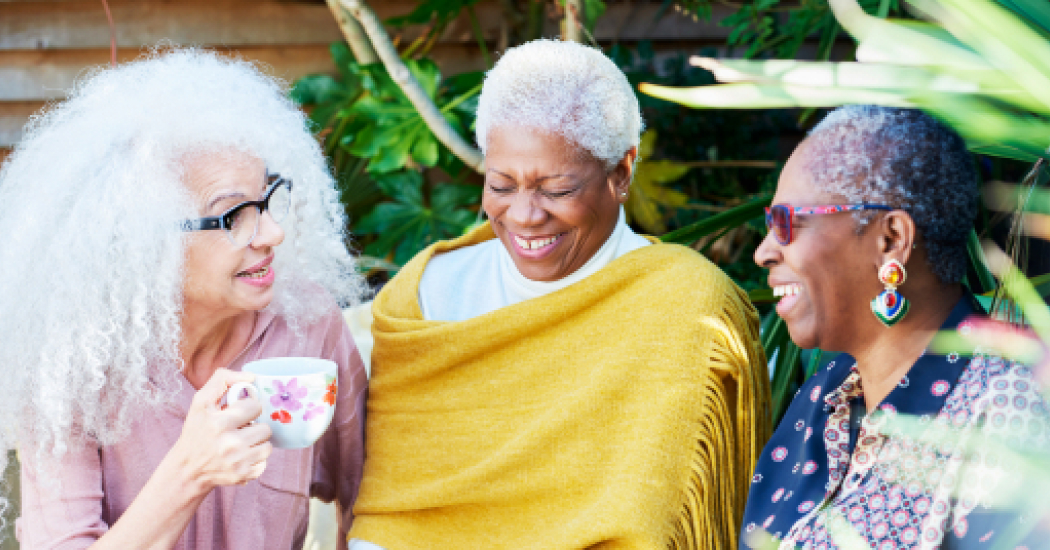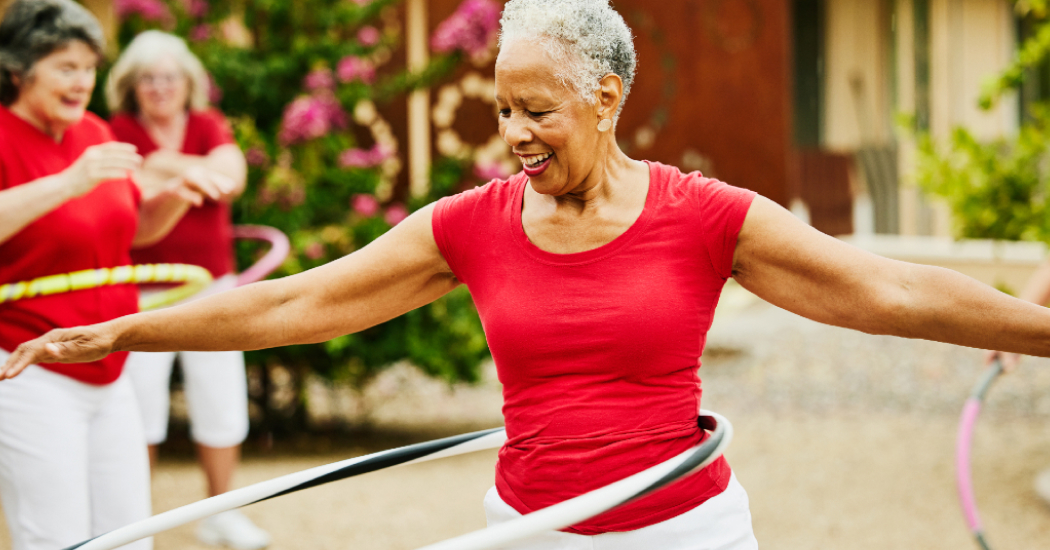Female Boomers—Trends Shaping Buying Behaviors

09.01.22
Dan Gallagher, EVP, Brand Strategy + Research
As part of a partnership with OWL Research Partners, we’re tracking trends affecting baby boomer consumers. This month’s issue highlights market forces and influences observed from recent months specific to female boomers.
Notable trends shaping the segment:
- Drunk on nostalgia. Male and female boomers alike seem to be suckers for nostalgia, and a recent Consumer Reports study revealed that their choice of “most satisfying car” further supports this notion, with boomers selecting the Chevrolet Corvette—a vehicle that dominated the landscapes of their youth. Summer concert tours are boomer pop-heavy this year, with the likes of Paul McCartney, Elton John, the Rolling Stones and Abba tapping into the nostalgia industry.
- Drawn to purpose. As the first generation of women who really did believe they could have it all—family, career, health, wealth and equality— female boomers transitioning out of the workforce are searching for new ways to contribute to society. From participating in the longevity economy to volunteering, female boomers are focused on repurposing, transitioning, and rethinking their life priorities. Following the recent overturning of Roe v. Wade, many boomer women are finding purpose by revitalizing their ability to mobilize around social and civil rights issues.
- Feeling invisible. Amid mountains of studies and data underscoring the massive buying power of the boomer crowd, the senior segment continues to be very much overlooked in marketing and advertising. Boomers are doing their best to remain visible while challenging stereotypes of what it means to age – as evidenced by the rise of TikTok “grandfluencers”—but marketers continue to focus on typical stereotyped aging issues like health and mobility. With boomer power projected to peak sometime in the late 2020s, this is not a generation to make assumptions about.
Retirement & Finances
Themes related to work, retirement and money
- Retirement planning is more critical than ever. The so-called “Great Retirement” that saw workers leave the labor market during the COVID-19 pandemic—whether forced or by choice—was driven by female baby boomers aged 65 and older. At the same time, many older Americans experienced a boost to their savings during this time. The average net worth for U.S. households run by those aged 55 to 69 jumped 12 percent during the pandemic, while net worth rose 14.8 percent for those 70 and older. However, a new study also concluded that many older Americans will outlive their retirement savings. The confluence of these factors suggests that the importance of retirement planning is only going to increase.
- Growing appeal of unretirement. Roughly 80 percent of adult workers expect their standard of living to fall in retirement, no surprise given that the average 60 year old has only $112,000 in retirement savings. The general inadequacy of retirement savings is just one factor driving many retirees back into the workforce— inflation, recession fears, lack of purpose, and pure boredom are other considerations. With the job market still booming and skilled workers in short supply, unretirement or partial retirement offer attractive alternative working arrangements for some seniors.
- Applying financial power to social change. With Morgan Stanley referring to women as the “CEOs of the family” as they control more than a third of total U.S. household financial assets, the economic power of women is more understood. And this power is increasingly being directed toward social impact and purpose-driven initiatives. However, recent research indicates that the share of boomers (38%) using their money this way is significantly less than millennials (83%) and Gen X (62%), suggesting that boomer women could be more targeted and engaged when it comes to applying their financial clout and purchasing power to the causes they claim to support.
Health & Wellness
Developments relevant to aging and health outlook
- Facing more complex health issues. A Penn State study released in June found that boomers are more likely than prior generations to have multiple health problems as they age. Among adults with multiple chronic health problems, arthritis and high blood pressure were the most common for all generations. But investigators concluded that higher rates of depression and diabetes drove the surge in chronic conditions seen in boomers. The research did not include specific findings by gender, but the issue of managing comorbidities is certainly a significant concern for boomer women.
- Optimism may be the fountain of life. A recent study by AARP Research revealed that levels of happiness increase significantly with age. The research found that more than a third of 80+ year-old respondents and 27 percent of those in their 70s reported being “very happy.” Relationships were a key driver of this happiness boost, with those over 70 also reporting higher levels of joy and purpose in relationships than younger cohorts. While great news on its own, a positive state of mind also opens doors to better health. Researchers at Harvard are reporting a clear link between optimism and longevity in women, suggesting that older women are not only happier than younger cohorts but that this attitude may improve health outcomes.
- Ageism impacting health. Two different studies released in June explored the consequences of ageism. An AARP report found that 81 percent of older working women have been told to look or act a certain way in the office—but the impact extends far beyond the office, and is increasingly recognized for negatively impacting mental health. In a separate study on “everyday ageism,” researchers found strong links between experiences of ageism and negative health outcomes. The research suggests that internalized ageism—such as joking about senior moments – may contribute to chronic stress and cumulatively diminish an individual’s overall health.
Lifestyle & Leisure
Issues surrounding home life and free time
- Desire to age in home spurs new offerings. With more than 90 percent of people hoping to remain in their own home as they age, products and services aimed at making this possible are on the rise. This includes a new online platform called Silvernest, which helps older Americans seeking roommates—cleverly dubbed “boommates”—to save money and improve their quality of life. Similarly, in collaboration with AARP, Lowe’s recently announced a campaign called “Lowe’s Livable Home” that emphasizes age-friendly home improvement renovations, such as curb-free showers, pull-out cabinet organizers and wheelchair ramps. Amazon also just launched its Alexa Together smart home technology which seeks to make independent living safe and accessible to more seniors.
- Creating age-friendly communities and spaces. Michigan’s Department of Health and Human Services this month identified a series of policies to support aging residents. The plan includes commitments to improve housing, transportation, accessibility, and communication to area seniors. Michigan joins nine other states currently working on age-friendly plans in conjunction with the AARP. And governments are not the only stakeholders actively planning for an age-friendly future. Developers are also building with seniors in mind, exploring new models for senior living that promote diversity and community integration.
- Pickleball mania hitting seniors hard. The sport that is overtaking the country is especially popular with the boomer crowd. With pickleball-themed restaurants, a glossy lifestyle magazine and a dedicated online community, participation surged by nearly 40 percent between 2019 and 2021 with no end in sight. The sport is described as being particularly appealing to seniors as it is played in pairs and the court is smaller than tennis. Boomers currently represent at least 30 percent of the folks playing pickleball, and most recruitment, education and injury prevention efforts continue to target this growing group.
Trends & Attitudes
Emerging issues and opinions
- Boomers trolled by younger generations. As a generation, boomers are known for being opinionated, outspoken, prone to excess and lacking tech savviness. This reputation has led to ire from other generations, including millennials snapping back after boomers suggested money mismanagement was the reason the younger generation can’t afford homes. A recent survey of American workers revealed that Gen Z spends in inordinate amount of time helping their boomer co-workers navigate technology in the workplace, and they are over it. The younger generation is even taking to TikTok to drag their hypocritical boomer parents.
- Redefining beauty standards. Boomer actress Emma Thompson is making headlines with the release of her latest movie Good Luck to You, Leo Grande. In the film, Thompson appears in the nude for the first time in her career, calling the role “very challenging” but also noting that “the film would not be the same without it.” The film taps into a broader conversation about body image and beauty standards for older women. Despite pushback, many women are finding confidence and new careers by challenging ageist beauty standards and embracing their changing bodies.
- Seeking balance of adventure and accessibility. Boomers still want adventure and travel but seek more targeted and senior-friendly options, as opposed to the more commonly encountered ageist approach of the luxury travel industry. To provide some guidance on this front, AgingInPlace released its annual list of vacation destinations for seniors in June, putting the U.S., Australia and Canada at the top of the list for scenic locations, good weather, and high availability of accessible lodging and amenities.
This article is featured in Media Impact Report No. 37. View the full report here.
